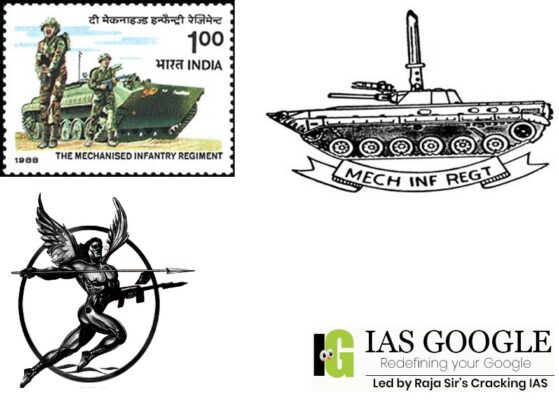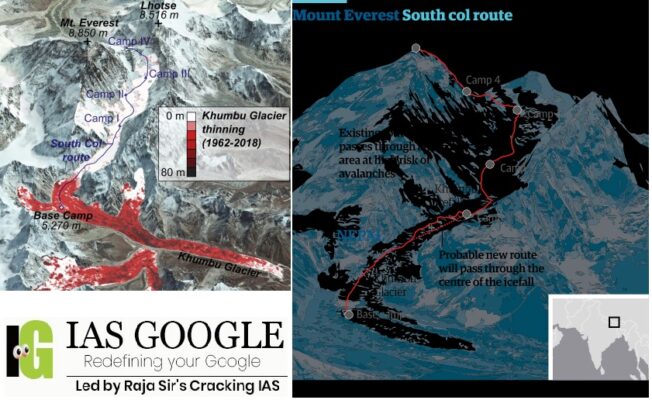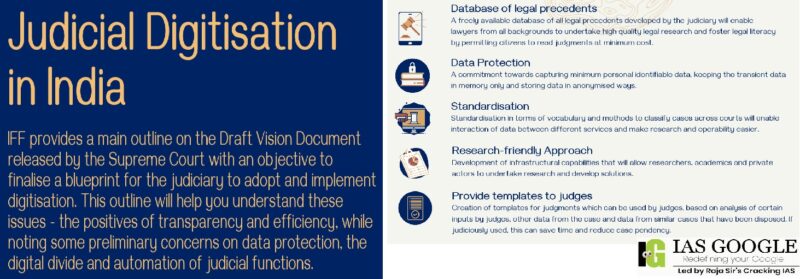- Home
- Prelims
- Mains
- Current Affairs
- Study Materials
- Test Series
 EDITORIALS & ARTICLES
EDITORIALS & ARTICLES
Feb 09, 2022
CABINET APPROVES PHASE 2 OF AMRUT
Recently, the Minister of Housing and Urban Affairs (MoHUA) has informed that in the Atal Mission for Rejuvenation and Urban Transformation (AMRUT) 2.0, rural-urban synergy will be affected whereby water markets for reuse of treated used water shall be ascertained in rural urban continuum.
 AMRUT 2.0:
AMRUT 2.0:
 Origin and evolution of mechanised infantry:
Origin and evolution of mechanised infantry:
 Highlights of the study
Highlights of the study
 UN World Food Program:
UN World Food Program:





 AMRUT 2.0:
AMRUT 2.0:
- AMRUT is the first focused water Mission which was launched in June 2015 in 500 cities.
- AMRUT 2.0 is a step towards achieving water secure cities to support the spirit of Aatma Nirbhar Bharat.
- It targets providing household water tap connections in 4,700 statutory towns and household coverage of sewerage/ septage services in 500 AMRUT cities.
- The total indicative outlay for AMRUT 2.0 is Rs. 2,99,000 crore which includes allocation for projects of ongoing AMRUT Mission to the tune of Rs. 22,000 crore for five years from FY 2021-22 to FY 2025-26.
- Funding will be done to the States and Union Territories for project implementation, Administrative & Other Expenses. Project funds will be released in three instalments of 20:40:40.
- Under AMRUT 2.0, cities will submit City Water Balance Plans (CWBPs) online on a robust Mission portal of MoHUA.
- CWBPs will give the status of water availability, water demand and supply in the city culminating in gaps in services.
- With the target of filling theses gaps projects will be formulated in the form of the City Water Action Plan. These plans will be aggregated at State level in the form of a State Water Action Plan (SWAP).
- Mission mandates implementation of 10% worth of funds allocated to million plus cities in PPP mode.
- Taking up projects on 24x7 water supply in 500 AMRUT cities which have population above one lakh is encouraged.
- Pey Jal Survekshan will assess quality and quantity of water supplied to the citizens and will instill healthy competition among cities to provide better water related services to the citizens.
- Information, Education & Communication (IEC) campaign targets to convert water conservation into a Jan Aandolan.
- Start-ups in the water sector will also be encouraged through Technology sub-Mission.
- Capacity building program shall impart training to elected representatives, Municipal functionaries and larger audience comprising contractors, managers, plumbers, plant operators, workmen, consultants, students, women, and citizens.
 Origin and evolution of mechanised infantry:
Origin and evolution of mechanised infantry:
- The need to mechanise our Infantry was first felt after the 1965 war.
- The 1971 war saw some of these battalions take part in action on both fronts (Eastern and Western) as part of combat groupings with armoured units for the first time.
- Due to conceptual employment and philosophy, Mech Inf today stands to lose out from two sides: -
- On the one hand, Mech Inf lacks the enormously effective protective armour and dominating firepower of the modern main battle tank.
- On the other hand, as an exemplar of infantry’s toughness and skill, it pales in comparison to both? the Standard Infantry and Airborne Infantry, at least in popular perception among the rank and file.
- Forces that are overly specialized or confined to narrowly prescribed functions are not flexible tools for combined arms warfare.
- Dismounted maneuver does not diminish the value or the significance of lethality of the weapon systems but it sought to encircle enemy forces.
- The Mech Inf provides a complimentary effect to make tank shock action far more effective to make seizure of terrain more definitive.
- Armies that were incapable of fully mechanising all their arms recognised it as a glaring deficiency and prevented them from exercising combined arms warfare at an effective tempo.
- Complimentary combined arms seek to integrate wholly different systems or capabilities to complicate and multiply the types of threat that would arise while facing an opponent.
- Exploiting the enhanced mobility of the infantry allows rapidity of operations.
- In modern warfare, an amphibious landing is the most complex of all military maneuvers Mech Inf is best suited for this role as it is the ‘only arm’.
- The airborne force of the Indian Army should be allotted with an Independent Mechanised Infantry Company to provide it with adequate staying power.
- There is a need to have the air/naval assets to move an adequately strong force in the envisaged time frame capable of achieving its aim till such time the remainder force is built up.
- Mechanised Infantry Battalion with its complement of ICVs should be raised and employed as a Corps reserve force during counter terrorist operations.
- Employment of mechanised forces automatically increases the firepower and technological quotient of an attacking force thereby reducing the required force ratios.
- Enhanced Capability of The Infantry Stick which break-up in a 4:3 concept.
- With availability of radio communication down to the section level by way of the Digital Control Harness, a Section Commander is now capable of direct communication with the ICV.
- Infusion of technology to include better communication and situational awareness, allows seamless fire and maneuver of the dismounts and ICV.
- The lethality of a mechanised infantry section is very high as compared to an infantry section.
- Institutional construct and modes of expression that treat Mechanised Infantry as something less than “real” infantry must be replaced by better ways of articulating its role.
- Borrowing the German notion that the primary characteristic of Mechanised Infantry is the agility with which it transitions between mounted and dismounted action would be apt. The concept of ‘agility’ is a superior means of articulating the role of Mechanised Infantry.
- Researchers led by the University of Maine found that the South Col Glacier has lost more than 180ft (54m) of thickness in the last 25 years.
 Highlights of the study
Highlights of the study
- South Col is losing ice roughly 80 times faster than it took for the ice to accumulate on the glacier's surface.
- Ice that took 2,000 years to form on the glacier has completely melted away since the 1990s.
- The highest glaciers on the planet are impacted by human-source climate change.
- The glacier's rapid decline could have serious impacts on the mountain, and those who live near it.
- The melt may result in more avalanches on Everest, or expose more bedrock that makes the terrain more treacherous for climbers.
- The rate of decline has been blamed on warming temperatures and strong winds.
- Millions of people depend on the Himalayan Mountain range for drinking water, and if other glaciers in the region - and worldwide - follow Everest's example, their capacity to provide water for drinking and irrigation could fall significantly.
- It is Earth's highest mountain above sea level, located in the Mahalangur Himal sub-range of the Himalayas.
- The China–Nepal border runs across its summit point.
- The Himalayan ranges were thrust upward by tectonic action as the Indian-Australian Plate moved northward from the south and was subducted (forced downward) under the Eurasian Plate following the collision of the two plates between about 40 and 50 million years ago.
- Everest is composed of multiple layers of rock folded back on themselves (nappes).
- Rock on the lower elevations of the mountain consists of metamorphic schists and gneisses, topped by igneous granites.
- Higher up are found sedimentary rocks of marine origin (remnants of the ancient floor of the Tethys Sea that closed after the collision of the two plates).
- Notable is the Yellow Band, a limestone formation that is prominently visible just below the summit pyramid.
- The elevation of the summit developed 29,028 feet (8,848 meters), plus or minus a fraction, was established by the Survey of India between 1952 and 1954 and became widely accepted.
- People in a region including Somalia, Ethiopia and Kenya face the driest conditions recorded since 1981.
- Drought conditions are affecting pastoral and farming communities. Malnutrition rates are high in the region.
- WFP said it needs $327 million to look after the urgent needs of 4.5 million people over the next six months.
 UN World Food Program:
UN World Food Program:
- It is the world’s largest humanitarian organisation addressing hunger and promoting food security.
- It was created in 1961 at the behest of US President Dwight Eisenhower as an experiment to provide food aid through the UN system.
- In 1965, WFP is enshrined as a fully-fledged UN programme: it is to last for “as long as multilateral food aid is found feasible and desirable”.
- In October 2020, the Norwegian Nobel Committee decided to award the Nobel Peace Prize to WFP "for its efforts to combat hunger.
- It works closely with its two Rome-based sister organizations, the Food and Agriculture Organization of the United Nations and the International Fund for Agricultural Development.
- It is the leading humanitarian organization saving lives and changing lives, delivering food assistance in emergencies and working with communities to improve nutrition and build resilience.
- As the international community has committed to end hunger, achieve food security and improved nutrition by 2030, one in nine people worldwide still do not have enough to eat.
- WFP’s efforts focus on emergency assistance, relief and rehabilitation, development aid and special operations.
- WFP development projects focus on nutrition, especially for mothers and children, addressing malnutrition from the earliest stages through programmes targeting the first 1,000 days from conception to a child’s second birthday, and later through school meals.
- In 2020, WFP provided 4,2 million metric tons of food and US$2.1 billion of cash and vouchers.

- The NGOs whose revoked registration was renewed included Public Health Foundation of India (PHFI), New Delhi and Missionaries of Charity (MoC), Kolkata.
- The NGO aimed to strengthen training, research and policy development in public health and was launched in 2006 by former Prime Minister Manmohan Singh.
- Section 32 of the Foreign Contribution (Regulation) Act, 2010 provides for revision by the Central Government of any order passed in a proceeding against any association registered under the Act.
- The application for revision is considered and disposed of on merits under the above provision of the Act.
- The FCRA 2010, replaced an earlier Act passed in 1976, was brought in by Parliament.
- It aims to consolidate the laws aimed at regulating and prohibiting “the acceptance and utilization of foreign contribution or foreign hospitality by certain individuals or associations or companies".
- It also aims to “prohibit acceptance and utilization of foreign contribution or foreign hospitality for any activities detrimental to national interest".
- The provisions of the Act apply to the territory of India, to citizens of India who may be outside India and to companies or their branches outside India that are registered or incorporated in India.
- The entities covered by the Act include an individual, a Hindu undivided family, an association, or a registered company.
- It says that any entity, or “person", can receive foreign funds as long as it has “a definite cultural, economic, educational, religious or social programme" and has obtained a nod under FCRA rules from the Centre, among other things.
- “Foreign contribution" under FCRA covers any “donation, delivery or transfer made by any foreign source of any article".
- Any currency, or security can fall under the ambit of the Act though it excludes any money received “by way of fee or towards cost in lieu of goods or services rendered by such person in the ordinary course of his business, trade or commerce whether within India or outside India".
- Neither are donations made by Non-Resident Indians (NRIs) considered to be “foreign contribution" although a donation from a person of Indian origin who has assumed foreign nationality is treated as “foreign contribution".
- A host of entities are barred from receiving foreign funds, including election candidates, those connected with a registered newspaper, judges, government servants or employees of any entity controlled or owned by the government and members of any legislature.
- Political parties and their office bearers, too, are prohibited from receiving foreign funds.
- The aim of this initiative is to encourage students who dropped out of schools during the Covid-19 pandemic to continue their education.
- On January 31, schools across the state opened for classes 8 to 12. However, students studying in lower classes continued to take the online classes.
- A section of doctors and parents were also in favour of reopening of schools.
- In view of the rising demand for physical classes, the state government reopened schools and also launched this neighbourhood classes initiative.
- Initially, the initiative was meant for primary school students (1 to 5).
- The students in classes 6 and 7 were also included as physical classes in schools did not reopen for them.
- Arrangements for mid-day meals have also been made for the students taking neighbourhood classes.

- Though work on the digitisation of records began in the high court in 2018, it gained significant momentum after Justice S. Muralidhar became its Chief Justice on January 4 last year.
- After Justice D.Y. Chandrachud, the chairperson of Supreme Court’s e-Committee, inaugurated the high court’s new, state-of-the-art Record Room Digitisation Centre (RRDC) near the Odisha Judicial Academy building in Cuttack.
- The transition to paperless courts would not have been possible without the establishment of the RRDC.
- It is equipped with a state-of-the-art fire-fighting system and surveillance-security measures.
- It provides facilities for the storage, digitisation, preservation and retrieval of disposed-of case records or legacy records, all under one roof.
- These records are now accessible for reference from the court room or any bench over a closed and secure network.
- The e-Courts Integrated Mission Mode Project is one of the National e-Governance projects being implemented in District and Subordinate Courts of the Country since 2007.
- The project is aimed at providing the necessary hardware and software application to enable courts to deliver e-services, and the judiciary to be able to monitor and manage the functioning of courts.
- The objective of the e-Courts project is to provide designated services to litigants, lawyers and the judiciary by universal computerisation of district and subordinate courts in the country and enhancement of ICT enablement of the justice system.

- It is aimed at prohibiting religious conversions which are affected through misrepresentation, force, undue influence, coercion, allurement or by any fraudulent means or by marriage or for marriage by making it an offense.
- According to the draft Bill’s statements of objectives and reasons the Constitution confers on each individual the fundamental right to profess, practice and propagate his religion.
- The Bill provides for greater punishment for such conversions in respect of minor, women, Scheduled Castes and the Scheduled Tribes.
- It also provides for that the burden of proof as to whether a conversion was not affected through misrepresentation, use of force, under threat, undue influence, coercion, allurement or by any fraudulent means or by marriage or for marriage for the purpose of carrying out conversion lies on the accused.
- According to the government and officials, many incidents of alleged “love jihad” have been reported in Haryana over the past few months, especially in the southern parts of the state.
- The government has told Parliament that “the term ‘love jihad’ is not defined under the extant laws”.
- The anti-conversion legislation in the states does not use the expression. But it is still used freely in political conversations and speeches.

- The recommendation comes at a time when the job scheme has become a safety net for migrant workers who returned to their villages during Covid-19.
- In Union Budget 2022-23, there was no increase in the allocation for MGNREGS, with the Finance Ministry retaining it at Rs 73,000 crore for the next fiscal year.
- The committee also recommended the Rural Development Department to “review its budgetary demand pertaining to MGNREGA and ensure that ‘agreed to labour budget’ is made at concerned level.
- The Government of India passed the Mahatma Gandhi National Rural Employment Guarantee Act, 2005 in September, 2005.
- The Act gives a legal guarantee of a hundred days of wage employment in a financial year to adult members of a rural household who demand employment and are willing to do unskilled manual work.
- The Act will be applicable to areas notified by the Central Government.
- The objective of the Act is to enhance the livelihood security of the people in the rural areas by generating wage employment through works that develop the infrastructure base of that area.

- The initiative aims to improve access to affordable and quality healthcare for vulnerable populations in tier-2 and tier-3 cities, and rural and tribal regions.
- The initiative will enhance SAMRIDH’s efforts to reach vulnerable populations, leveraging AIM’s expertise in innovation and entrepreneurship.
- The collaboration would focus on innovations across the healthcare landscape with the common goal to mount an effective response to the ongoing third wave of COVID-19 and build health system preparedness for future infectious disease outbreaks and health emergencies.
- It is Government of India’s flagship initiative to promote a culture of innovation and entrepreneurship in the country and was setup in 2016.
- Its objective is to:
- develop new programmes and policies for fostering innovation in different sectors of the economy,
- provide platforms and collaboration opportunities for different stakeholders, and
- create an umbrella structure to oversee the innovation & entrepreneurship ecosystem of the country.
- It is setup by National Institution of Transforming India (NITI) Aayog to promote the entrepreneurial requirements.
- It is supported by the United States Agency for International Development (USAID) and Indian Institute of Technology-Delhi (IIT-D).
- It combines commercial capital with public and philanthropic funds to drive greater resources towards improving access to affordable and quality healthcare services for India’s most vulnerable.
- SAMRIDH aims to mobilize a capital pool of $100+ million from private sector and bilateral organizations. It leverages this fund to offer both grant and debt financing provision to support the expansion of market-based health solutions.
- It aims to support the adoption and scaling up of market-based health solutions addressing the pandemic’s emergency and surge needs through blended financing.
- The solutions include augmenting oxygen supplies, infrastructure, supply chains, community-based case management and outreach, demand generation, etc.
- The financing can be pure grants, a mix of grants complimenting debt, and pure blended capital transactions.









 Latest News
Latest News General Studies
General Studies